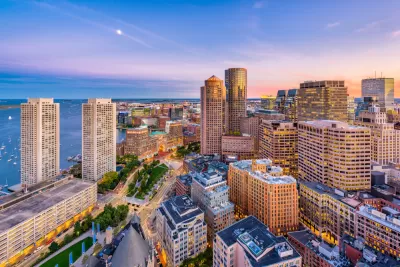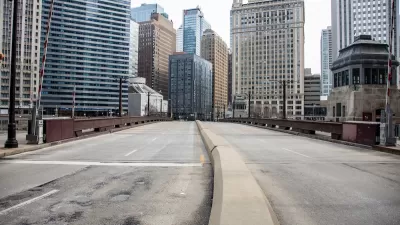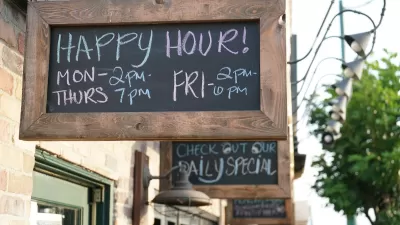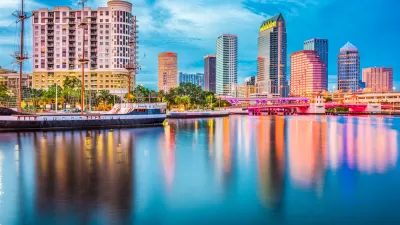A new report suggests that despite recent challenges, the ‘value proposition’ of urban activity centers remains as strong as ever.

An analysis from the Bass Center for Transformative Placemaking presents evidence in favor of the argument that, despite pre-pandemic growth in suburban job centers and the pandemic-induced clearing out of central business districts, “cities’ value proposition is still very much intact.”
Tracy Hadden Loh and Jennifer S. Vey outline the results of the report for Bloomberg CityLab, writing that “these findings can inform city leaders on how workplace needs might continue to evolve — and how they can deploy policy and funding to shape a more resilient economic future.”
Presenting their evidence, Loh and Vey note that “In our model, every increase in median activity center job density of 1,000 jobs per square mile is worth an additional $1,723 in output per worker across the metro area.”
While correlation is not causation, this suggestive relationship between place and productivity is important for employers and workers to consider as they make decisions about where to locate — and for urban leaders to recognize as they work to sway those choices in their favor.
According to Loh and Vey, “There is substantial measurable value to employers and the economy when firms locate their workers in close proximity not just to their colleagues, but to workers from other firms and sectors.”
The authors describe steps cities can take to keep downtowns vibrant, such as ensuring frequent and reliable transit services to reduce the cost and time spent commuting, concentrating housing near job centers, and investing in inviting, safe, accessible public spaces that make people want to spend time in cities.
FULL STORY: The Productive Power of Urban ‘Activity Centers’

Americans May Be Stuck — But Why?
Americans are moving a lot less than they once did, and that is a problem. While Yoni Applebaum, in his highly-publicized article Stuck, gets the reasons badly wrong, it's still important to ask: why are we moving so much less than before?

Using Old Oil and Gas Wells for Green Energy Storage
Penn State researchers have found that repurposing abandoned oil and gas wells for geothermal-assisted compressed-air energy storage can boost efficiency, reduce environmental risks, and support clean energy and job transitions.

Placekeeping: Setting a New Precedent for City Planners
How a preservation-based approach to redevelopment and urban design can prevent displacement and honor legacy communities.

San Francisco’s Muni Ridership Grew in 2024
The system saw its highest ridership since before the Covid-19 pandemic, but faces a severe budget shortage in the coming year.

Colorado Lawmakers Move to Protect BRT Funding
In the face of potential federal funding cuts, CDOT leaders reasserted their commitment to planned bus rapid transit projects.

Safe Streets Funding in Jeopardy
The Trump administration is specifically targeting bike infrastructure and other road safety projects in its funding cuts.
Urban Design for Planners 1: Software Tools
This six-course series explores essential urban design concepts using open source software and equips planners with the tools they need to participate fully in the urban design process.
Planning for Universal Design
Learn the tools for implementing Universal Design in planning regulations.
Heyer Gruel & Associates PA
City of Moreno Valley
Institute for Housing and Urban Development Studies (IHS)
City of Grandview
Harvard GSD Executive Education
Salt Lake City
NYU Wagner Graduate School of Public Service
City of Cambridge, Maryland





























